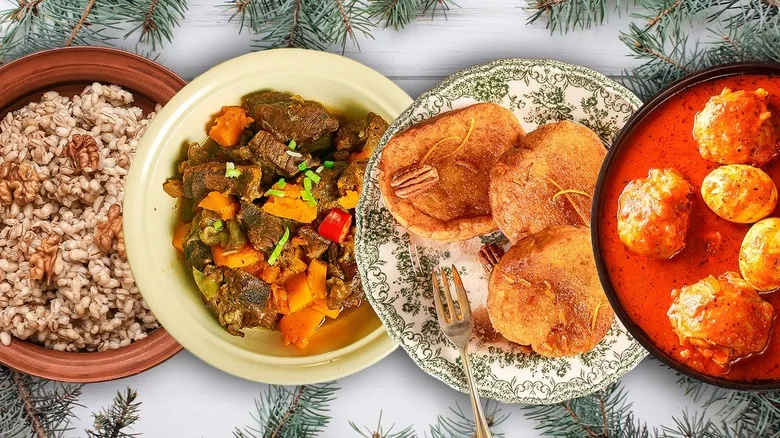Foie Gras - France
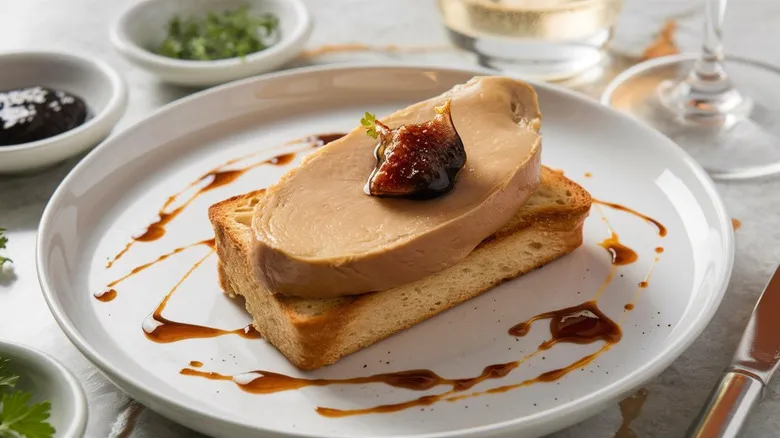
The French hold their culinary traditions in high regard, and Christmas is no exception. The main feast is usually celebrated on Christmas Eve, transforming into a grand gastronomic event. It often begins with champagne, leading into a sequence of appetizers, main courses, side dishes, and desserts. While the specific dishes may vary, one item that consistently graces a traditional French Christmas dinner is foie gras.
Although it can be a contentious choice in other regions, foie gras is a staple of French culinary heritage. This luxurious delicacy consists of the liver of ducks or geese that have been specially fattened. It is commonly served as pâté alongside toast and fruit preserves. The rich, buttery taste serves as an exquisite start to the festive meal. Following the foie gras, diners might enjoy dishes such as oysters, turkey, and Bûche de Noël (yule log).
Christopsomo - Greece
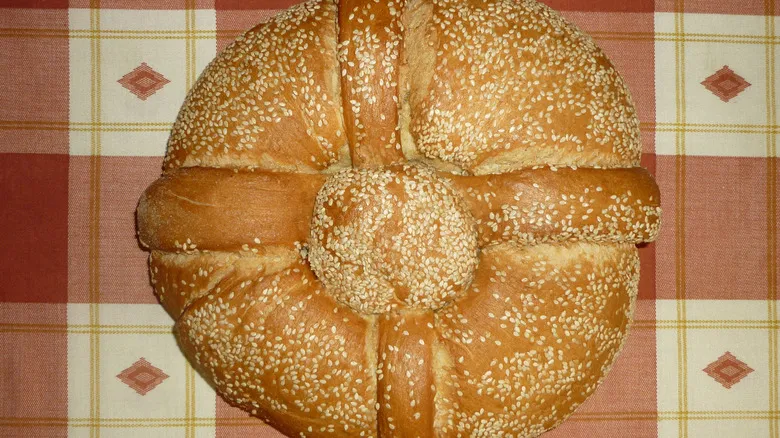
Numerous families in Greece observe Christmas by preparing Christopsomo, also known as "Christ's bread." This traditional round bread is always adorned with a cross. While recipes can differ, the bread generally consists of flour, yeast, sugar, and fragrant spices such as star anise and cinnamon. Some variations may include additional ingredients like walnuts, honey, raisins, and brandy.
Typically, Greek families bake Christopsomo a day or two prior to the holiday, enjoying it on Christmas Day. This bread is regarded as an offering to Christ, crafted with great care and high-quality ingredients. When it's time to partake in the bread, a family member blesses it with the sign of the cross before sharing it among the family. Consuming the bread is a way to honor Christ and to wish for good health and prosperity for the family in the year ahead.
Tamales - Mexico
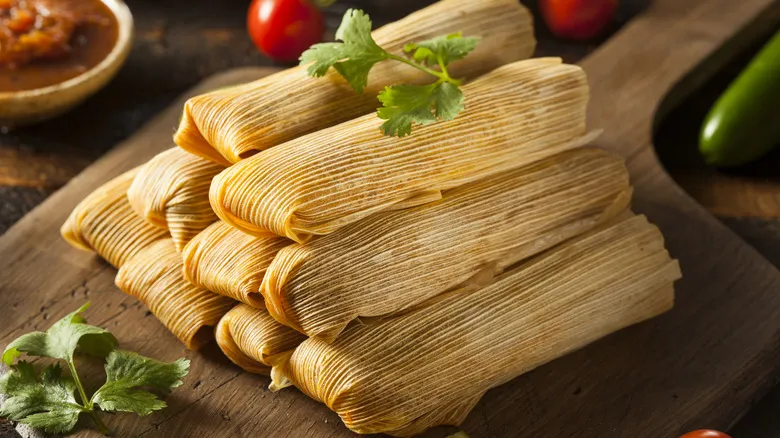
Christmas is synonymous with classic comfort foods, and in Mexico, few dishes embody this spirit as much as tamales. These hearty bundles of delight have their origins in pre-Columbian times and are a staple of festive celebrations. Made from masa (corn dough) combined with various fillings, they are wrapped in corn husks or banana leaves and steamed (if corn husks or banana leaves are unavailable, there are still alternatives). Common fillings include chicken, pork, beans, and corn.
Many Mexican families celebrate their holiday feast on Christmas Eve, known as Noche Buena. On this special night, friends and family gather to enjoy a diverse array of dishes. Tamales are essential, but the menu may also feature pozole (a hominy and meat soup), ensalada Navideña (a creamy apple salad), and buñuelos (fried dough sprinkled with cinnamon sugar). The meal is often accompanied by Christmas fruit punch or a glass of festive rompope (Mexican eggnog).
Hangikjöt - Iceland
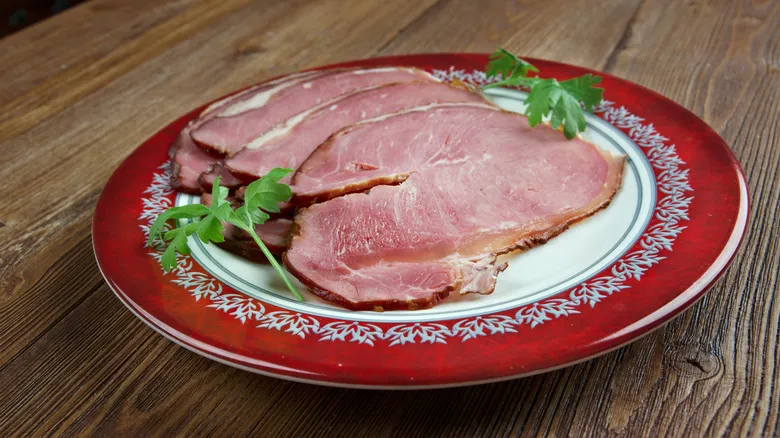
One of the most renowned Christmas dishes in Iceland is hangikjöt, which means "hung meat." This dish is typically prepared using lamb, though some opt for mutton or horse meat. Its origins trace back to Viking times, involving the practice of hanging a leg of meat and smoking it with burning sheep dung or birch wood.
There are various ways to enjoy hangikjöt. It can be sliced and used in sandwiches, chopped for tartare, or savored on its own like prosciutto. During Christmas, it is usually boiled and served alongside sides such as potatoes and carrots. Many people also generously coat it with a white sauce, which is essentially béchamel. Another popular side dish is laufabrauð, or leaf bread, a thin fried bread that is a traditional Icelandic Christmas treat.
Pavlova - Australia

In Australia, Christmas occurs during the summer months, which explains why many festive dishes tend to be lighter compared to those enjoyed in cooler regions. Seafood, potato salads, and cold meats are particularly popular choices. For dessert, a classic holiday favorite is the refreshing pavlova, a light and airy cake made of meringue, topped with whipped cream and fresh fruit.
The origins of pavlova are fiercely debated between Australia and New Zealand. However, most people agree that it was named after Anna Pavlova, a Russian ballerina who toured both nations in 1926. New Zealanders claim it was first created at a hotel in Wellington, inspired by the ballerina's tutu. In contrast, Australians assert that a chef at a hotel in Perth invented it, naming it after a customer who remarked that the dessert was "as light as Pavlova."
Nyama choma - Kenya
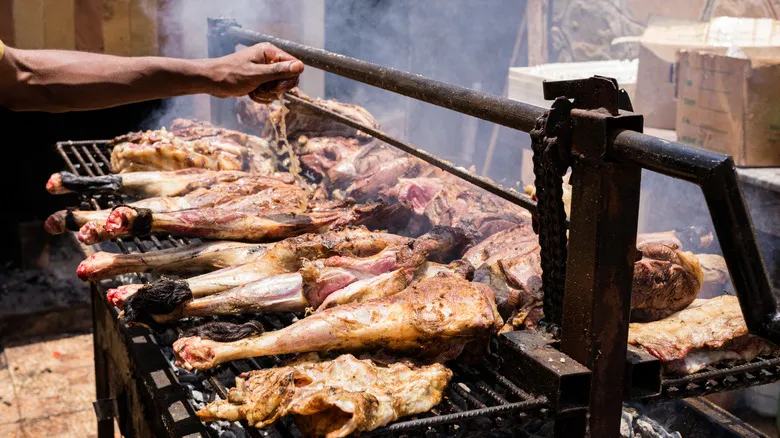
Nothing embodies Christmas in Kenya quite like nyama choma. This mouthwatering barbecue dish is a favorite across East Africa, featuring meat grilled over an open flame. While goat meat is the traditional choice for nyama choma, it can also be prepared with lamb, beef, or chicken. The meat is marinated in a blend of spices and cooked until it’s smoky and tender. It’s an ideal dish for sharing with loved ones, making it a wonderful centerpiece for Christmas dinner.
Although nyama choma steals the show at a Kenyan Christmas feast, no barbecue is complete without delicious accompaniments. Common side dishes include chapati (a type of flatbread), ugali (a cornmeal porridge), and pilau (rice cooked with broth and spices). Many also enjoy serving nyama choma alongside kachumbari, a refreshing salad made with fresh tomatoes, onions, and chilies.
Vitel toné - Argentina
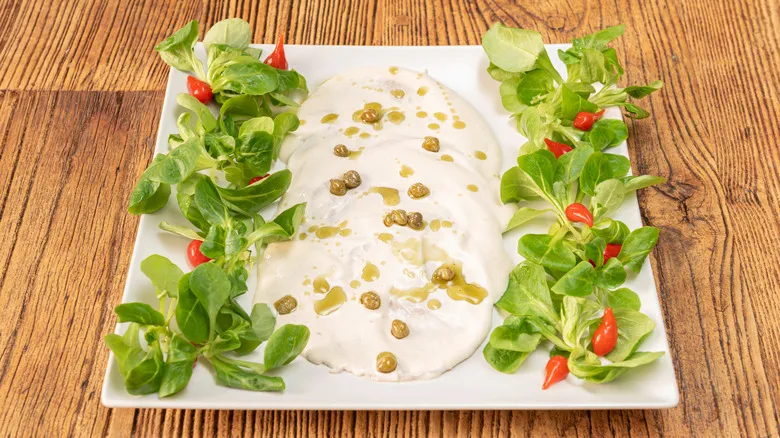
Argentina is another destination in the southern hemisphere where the weather is typically warm during Christmas. Given this, it's no surprise that cold dishes are commonly enjoyed during the holiday season. One such dish is vitel toné, a popular Christmas favorite usually served chilled or at room temperature. It features thinly sliced poached veal, generously topped with a creamy sauce made from tuna, anchovies, and mayonnaise, finished off with a sprinkle of capers.
If vitel toné sounds somewhat familiar, you might be recalling vitello tonnato from Italy. Italian immigrants brought this dish to Argentina, where it underwent a few minor adaptations. For instance, many Italian versions use hard-boiled egg yolks and olive oil in the sauce instead of mayonnaise. Despite these small variations, the essence of the dish has largely remained intact.
Feuerzangenbowle - Germany
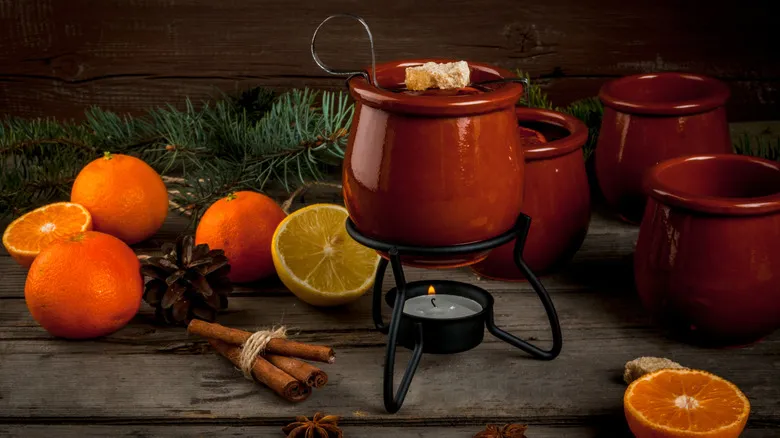
When you explore a Christmas market in Germany, you're likely to encounter people enjoying large mugs of feuerzangenbowle. This festive beverage, whose name means "fire tongs punch," is a spectacular flaming drink. It features a blend of red wine, cinnamon, cloves, lemon juice, and orange juice, all heated to create a delightful mulled wine, ideally made with specific wine varieties. What sets feuerzangenbowle apart is the sugar loaf placed on tongs above the drink, soaked in rum, and ignited.
Feuerzangenbowle is cherished not only for its unique presentation but also for its festive flavors and spirited kick. The spices harmonize beautifully with the caramelized sugar, while the combination of wine and rum provides a comforting warmth. If you're looking for something a bit gentler, glühwein is simply mulled wine without the rum, sugar, and flames. Another festive option is eierpunsch, a drink akin to eggnog that is enhanced with brandy.
Olivier salad - Russia
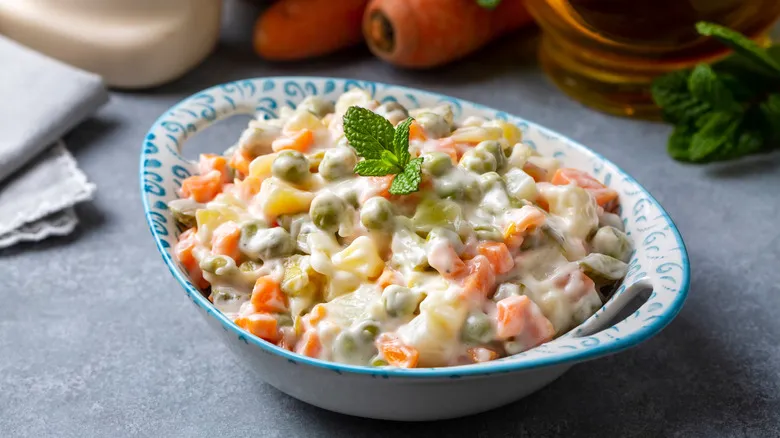
Russians have a unique way of celebrating Christmas compared to many other cultures worldwide. For starters, Orthodox Christmas is observed on January 7, and it is generally a serene day dedicated to family. The main festivities occur on New Year's Eve, when people indulge in feasting and celebrations. However, the week between New Year's and Christmas is typically focused on gathering with friends, family, and enjoying food. One popular dish served during this festive season is Olivier salad.
Also known as Russian salad, Olivier salad was originally created by a French chef named Lucien Olivier at the Hermitage restaurant in Moscow in the late 1800s. The initial recipe featured extravagant ingredients such as smoked duck, caviar, and crayfish. Nowadays, a typical Olivier salad is more economical, usually consisting of potatoes, eggs, meat, and vegetables mixed in a creamy mayonnaise dressing.
Sopa de galets - Spain
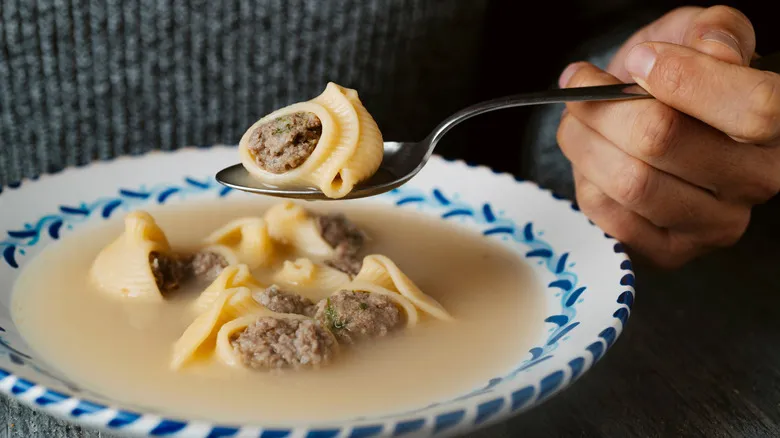
In the Catalonia region of Spain, a Christmas Day celebration typically begins with a generous bowl of soup. But this isn't just any soup; it must be sopa de galets. Galets are pasta shaped like shells, and for this festive dish, they are filled with meatballs made from a blend of pork and beef.
Preparing sopa de galets can be quite intricate, but that complexity is what gives the dish its rich flavor. To start, you'll need to create a flavorful stock using ingredients such as pork and beef bones, ground pork, ground beef, chicken, and a variety of vegetables. While the stock simmers, you can prepare the meatballs and carefully stuff or pipe them into the pasta shells. Once the pasta and meatballs are added to the broth, boil everything until cooked through, and you'll have a deliciously hearty Christmas soup, Catalan style.
Lechon - Philippines
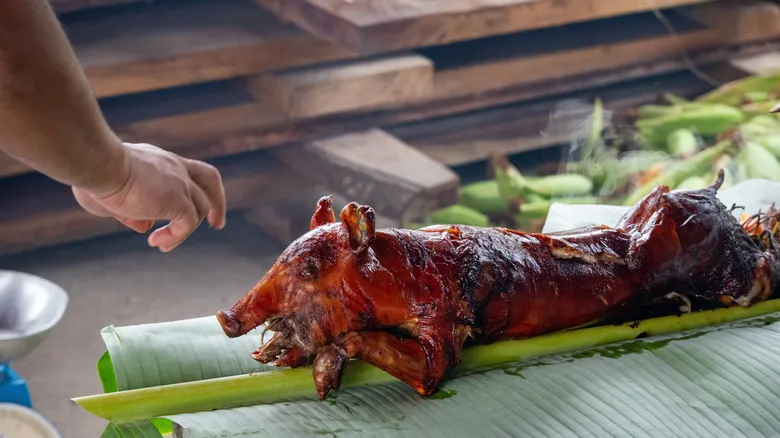
Christmas is a significant celebration in the Philippines, with many people beginning their festivities as early as September and continuing through the first week of January. Noche Buena, or Christmas Eve, is the highlight of the season, featuring a grand feast. At the center of the dinner table is lechon, a whole pig that is roasted to achieve a crispy exterior while remaining tender and juicy on the inside.
Similar to turkey, preparing lechon is a labor-intensive process that can take several hours to perfect. The pig is typically brined or marinated beforehand to enhance its flavor and keep the meat moist. It is then seasoned with ingredients such as salt, pepper, garlic, and lemongrass. The entire pig is spit-roasted over open flames for hours, being basted continuously until the skin turns a beautiful golden brown and the meat becomes tender.
Lutefisk - Norway
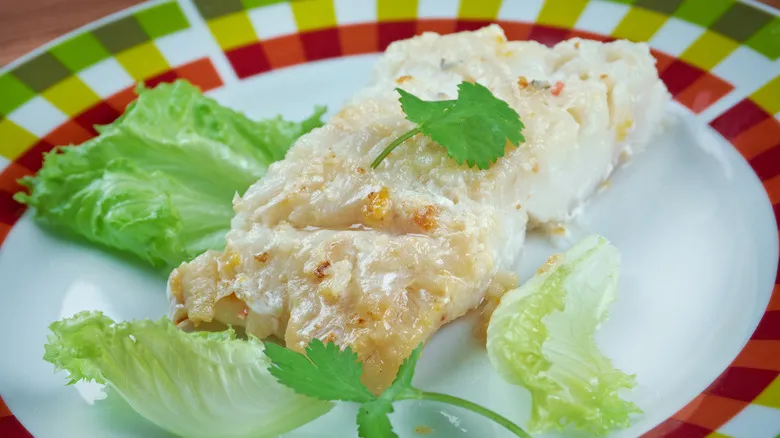
Lutefisk, with its obscure origins, may seem peculiar to outsiders, but for Norwegians, it is a cherished Christmas treat. The preparation involves soaking dried cod in water for several days, followed by an additional soaking in a lye solution for a few more days. This process causes the fish to expand and acquire a spongy, almost gelatinous consistency. Since lye is toxic, the lutefisk must be soaked in water again for several days before it is safe to consume.
Lutefisk dinners are a popular tradition during the holiday season in Norway, as well as in other Nordic countries and regions with significant Scandinavian communities. The fish can be either baked or poached and is typically accompanied by potatoes and mushy peas. Many people enjoy it generously topped with butter or cream sauce. If you can overlook the somewhat slippery texture and strong fish flavor, many consider it to be a truly delightful dish.
Tourtière - French Canada
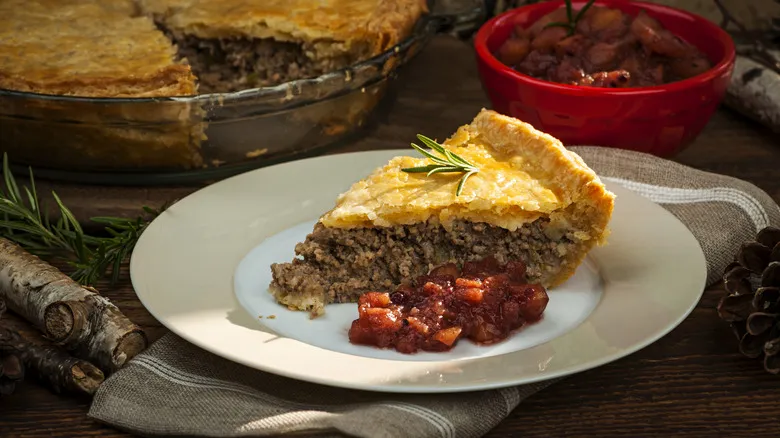
Tourtière is a beloved dish from French Canadian cuisine that has its origins in the 1600s. French settlers introduced this delicious meat pie to Canada, and it soon became a staple of the Christmas Eve celebration known as Réveillon. Nowadays, you can find various versions of tourtière, featuring spiced meats or seafood encased in a flaky, buttery crust.
A traditional tourtière usually includes ground pork or beef, but you can substitute any type of meat or fish. The meat is sautéed with onions and garlic, then seasoned with spices such as cloves, allspice, and nutmeg. This fragrant filling is heaped into a pastry shell, covered with another layer of pastry, and baked until it achieves a golden brown color. It is often served alongside other festive dishes like roasted vegetables and creamy mashed potatoes (be sure to check out our tips for enhancing your mashed potatoes).
Panettone - Italy
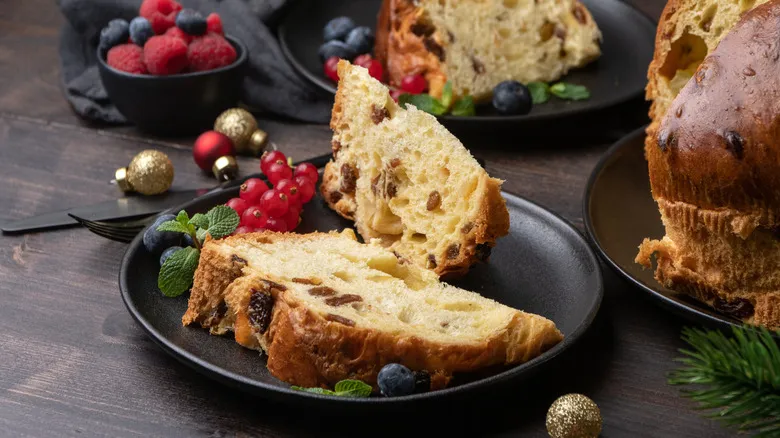
While Italy is often celebrated for its pizza and pasta, during the Christmas season, panettone becomes the sought-after treat. This large, dome-shaped bread is airy and fluffy, yet rich and infused with citrus and fruity notes. Typically crafted from flour, yeast, eggs, butter, and sugar, it often includes ingredients like raisins and candied orange peel, with some variations featuring nuts and chocolate.
The process of properly proofing panettone can take several days, leading many to purchase it from bakeries and supermarkets. It can be savored in the morning alongside coffee or tea, or enjoyed as a dessert topped with indulgent options like chocolate or cream sauce. Just remember to share it with loved ones, as it is considered unlucky to cut off the domed top or to consume it all on your own, according to Italy Magazine.
Doro Wat - Ethiopia
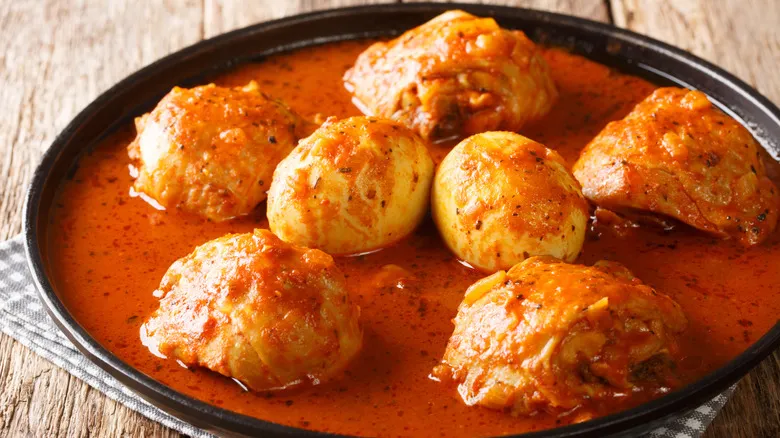
Like many other Orthodox Christians globally, Ethiopian Orthodox Christians celebrate Christmas on January 7 rather than December 25. This celebration, known as Ganna, signifies the conclusion of a 40-day fasting period during which individuals usually consume only one vegan meal each day. On Christmas Day, most people break their fast with a hearty and flavorful dish called doro wat.
Doro wat is a cherished Ethiopian stew made with chicken simmered in a spicy sauce that includes hard-boiled eggs. The stew's vibrant color and rich flavors come from berbere, a fragrant spice blend that contains chiles, cardamom, fenugreek, and coriander. After simmering the doro wat for several hours until it reaches a thick and rich consistency, it is typically served with injera, a thin flatbread used to scoop up the stew.
Rabanada - Brazil

In Brazil, many families consider it unthinkable to celebrate Christmas without rabanada. This delightful dish, akin to French toast, consists of fried bread. It begins with thick slices of crusty bread that are soaked in a mixture of milk and sweetened condensed milk, then dipped in eggs and fried to perfection. While still warm, the bread is coated in a mixture of cinnamon and sugar.
Rabanada can be enjoyed as a breakfast item, but it is more commonly served as a dessert during Christmas Eve dinner in Brazil. The festive meal might kick off with pão de queijo (cheese bread) and feature main courses such as roasted turkey or chester (a meatier variety of chicken). Traditional side dishes often include salpicão (chicken salad) and farofa (toasted cassava flour with bacon). If there's still space for dessert after all that, rabanada provides a wonderfully sweet conclusion to the feast.
Pepperpot - Guyana
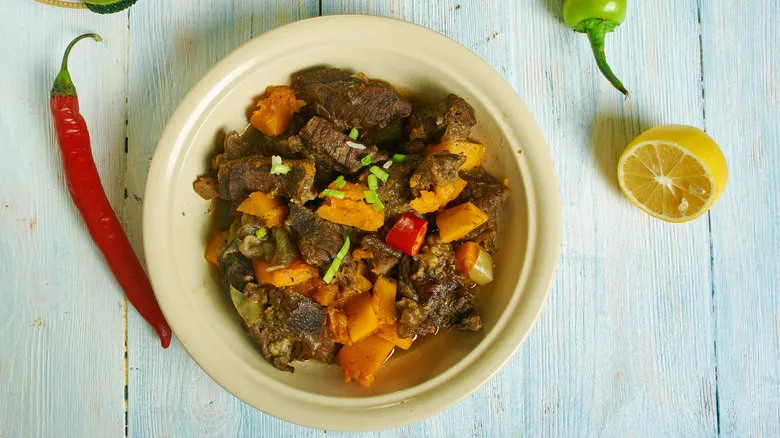
If you're looking to infuse some Caribbean flair into your Christmas feast, think about preparing a pepperpot. This dish is the national specialty of Guyana, a small nation located on the Caribbean coast of South America. Traditionally, Guyanese people enjoy this hearty, meaty stew for breakfast on Christmas morning, but it can be savored at any time of day or night.
A classic pepperpot features tough cuts of beef that are slow-cooked for hours in a lively sauce made with chiles, garlic, ginger, cinnamon, and cloves. Its unique flavor comes from cassareep, a thick syrup derived from cassava root that has a slightly sweet and bitter taste. Additionally, cassareep possesses antiseptic qualities that help preserve the meat. Some cooks also incorporate orange peel and nutmeg to enhance their pepperpot with festive flavors and vibrancy.
Kutia - Ukraine
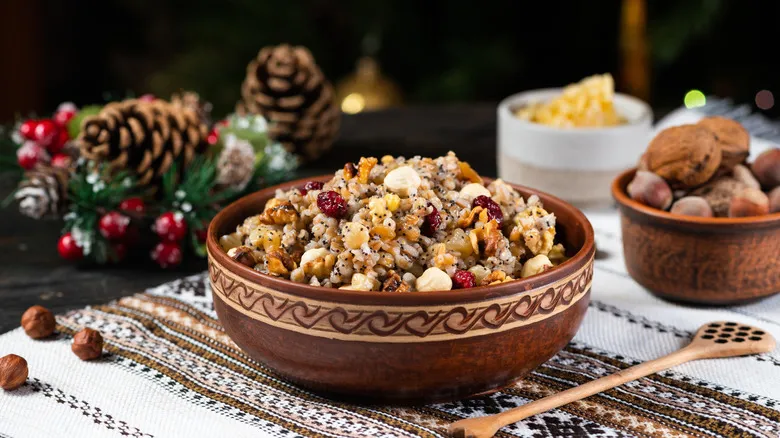
In Ukraine, Christmas Eve is centered around Sviata Vecheria, or the "Holy Dinner." This festive meal features 12 distinct dishes, each representing one of the 12 apostles. The first course is usually a large pot of kutia, a sweet, porridge-like dish made from wheat berries. Traditionally, the head of the family takes the first spoonful before everyone else joins in.
Each family has its own unique recipe for kutia, but it generally includes boiled wheat berries sweetened with honey. Some variations incorporate nuts, poppy seeds, and dried fruits. Following the kutia, the meal may include dishes such as borshch (beet soup), holubtsi (cabbage rolls), and varenyky (pierogies). The meal is often complemented by uzvar, a sweet beverage made from fruits and spices.
Bacalhau - Portugal
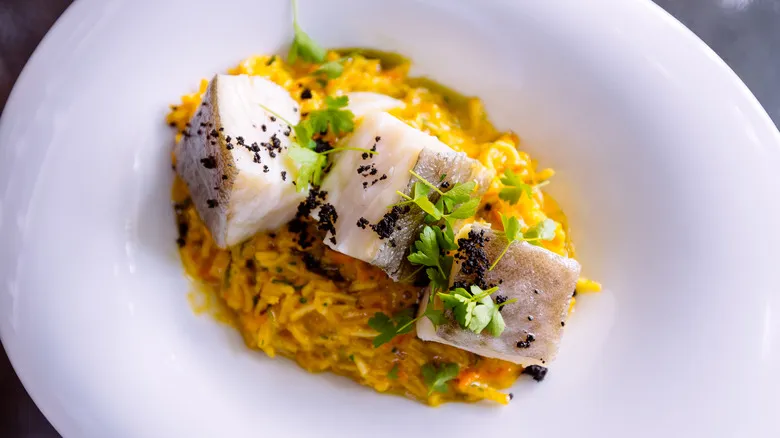
Bacalhau boasts a rich and extensive history in Portugal. Since the 14th century, the Portuguese have been catching cod in the North Atlantic Ocean. During that era, salting and drying fish were crucial for preservation. Salted cod became such a dependable food source in Portugal that it earned the nickname "faithful friend." Additionally, bacalhau became a key component of the Christmas Eve feast, known as Consoada.
Traditionally, Portuguese Catholics abstained from meat on Christmas Eve, making bacalhau a popular alternative. Today, many families continue to feature bacalhau as the centerpiece of their Consoada celebrations. The salted cod is typically boiled and accompanied by potatoes, carrots, and cabbage. It can also be prepared as a casserole, such as the classic bacalhau com natas, which includes cod, cream, potatoes, and onions.
Apples - China
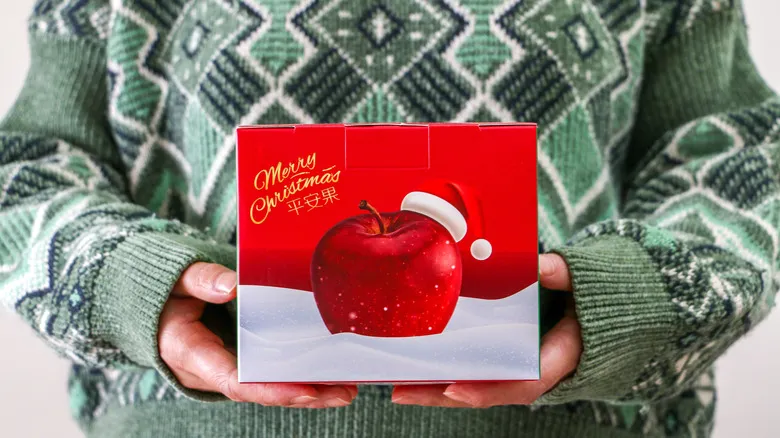
Christmas has not traditionally been a major celebration in China. However, in recent years, a unique Christmas custom has emerged that is not commonly found elsewhere: the practice of giving apples to friends on or before Christmas Eve. The belief is that consuming an apple on Christmas Eve will usher in peace for the coming year.
The most prevalent explanation for the rise of this apple-gifting tradition in China relates to language. Christmas Eve is referred to as "ping'an ye" in Mandarin, which means "night of peace." The word for apple in Mandarin is "pingguo," which bears a resemblance in sound. When these two terms are combined, they create the phrase "peace apple." While this may have originated as a clever marketing strategy by individuals or companies aiming to boost apple sales, this charming custom has surprisingly persisted.
Recommended
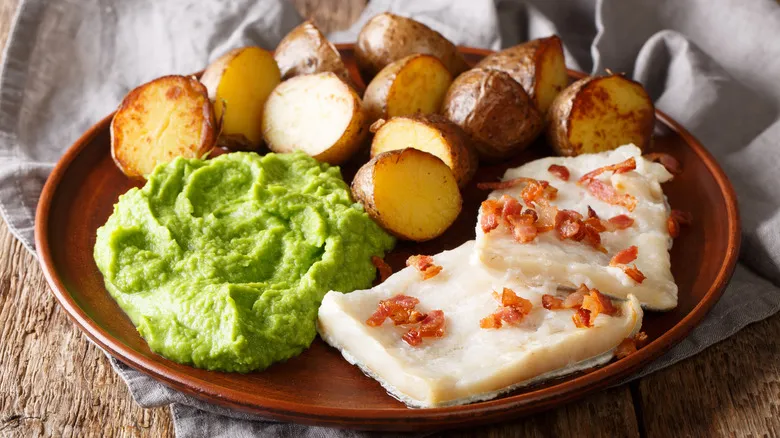
The Murky Origins Of Lutefisk Fish

The Origin Of The Chili Dog Is A Meaty Mystery
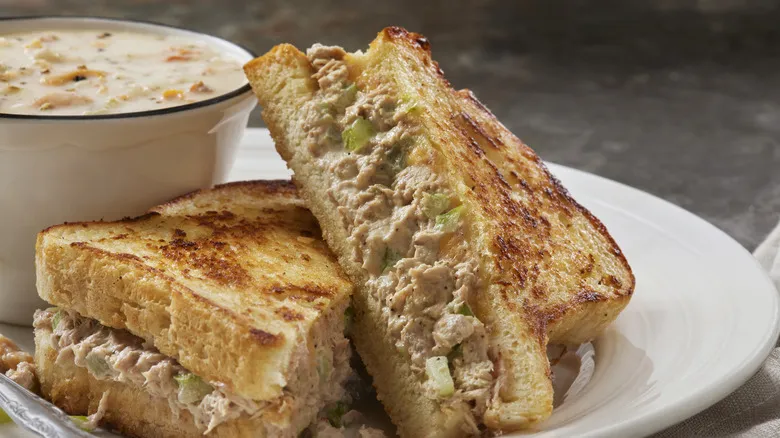
The Mysterious Origins Of The Tuna Melt
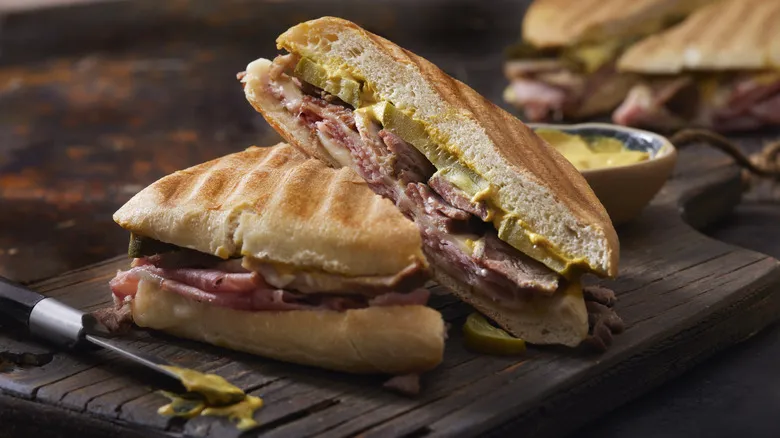
Why Cuban Sandwiches Are A Florida Staple
Next up

